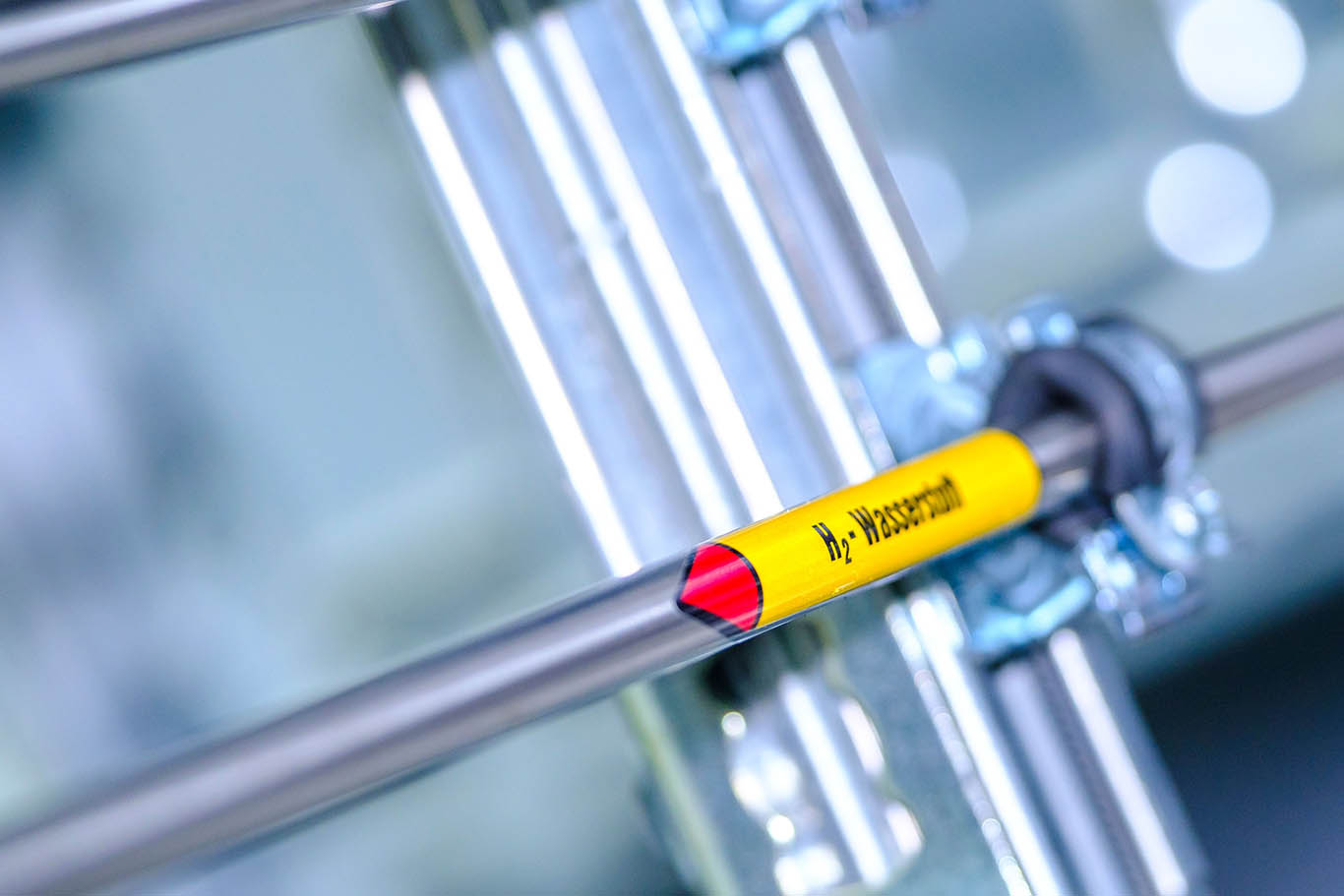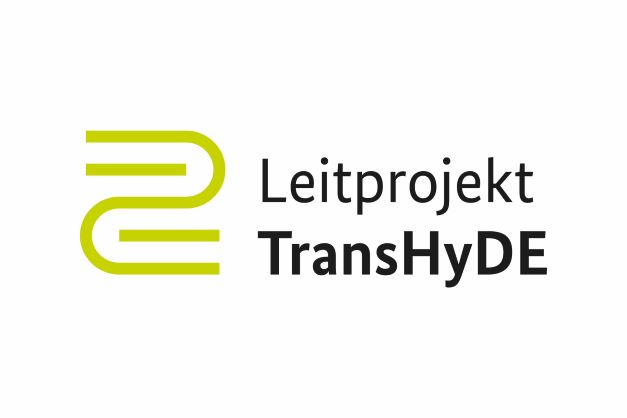TransHyDE project
Sensor technology for safe hydrogen handling
Measurement technology is indispensible to the use of hydrogen as an energy source. Sensors that reliably detect leaks in storage tanks, pipelines and supply points are needed to ensure that hydrogen infrastructure is operated safely. Fraunhofer IPM has been working with partners from science and industry for exactly one year on the TransHyDE joint project funded by the German Federal Ministry of Education and Research, which aims to develop new sensor designs that can ensure the safety of hydrogen technology, enable hydrogen purity measurements and determine H2 content in natural gas grids.

Hydrogen is particularly well suited to use as a chemical energy store. “Green hydrogen”, produced using renewable electricity, is therefore seen as a key component in the energy transition. The gas also comes with significant risks, however: In low concentrations it is flammable, and in higher concentrations it can even be explosive. As a result, any future hydrogen infrastructure must be subject to continuous monitoring to ensure that even the smallest leaks of H2, and the transport gas ammonia (NH3), are detected immediately. The hydrogen sensors available today fail to meet the stringent requirements for measurement accuracy, service life and cost effectiveness imposed here. In the TransHyDE project, researchers from Fraunhofer IPM are collaborating closely with metrology specialists from Endress + Hauser and from RMA Rheinau to develop and test innovative measurement approaches that will enable accurate leak detection, H2 gas quality measurements, and the analysis of gas components in hydrogen gas mixtures.
Small leak, high risk: Hypersensitive, reliable H2 sensor measurements are a must
In future, a low maintenance, self-testing sensor is set to provide continuous monitoring of large-scale facilities. This compact sensor will detect hydrogen based on its specific sound velocity and its high degree of thermal conductivity compared to other gases. By combining two measurement principles, the sensor is designed to meet the exacting functional safety standards required. A compact, cost-effective optical measurement system will likewise be employed to continuously detect hydrogen through Raman scattering. Instead of a costly spectrometer, however, a more inexpensive detector is destined to evaluate the scattered light.
Laser spectroscopy and infrared imaging will enable NH3 leaks to be detected at a range of several meters. Here, a demonstrator will be constructed and tested for contactless, remote, imaging-based detection.
In future, colorimetric sensors should further enable the invisible gases H2 and NH3 to be discernable with the naked eye. This will be achieved thanks to a special paint, applied to pipelines and fittings, that changes color on contact with the gas. Such color-changing sensors are particularly useful during construction and installation works.
Determining purity: Fuel cells need H2 without additional gas components
Hydrogen purity plays a key role in operations such as fuel cell function. Even low concentrations of impurities here can reduce service life or even cause a complete breakdown. Fraunhofer IPM’s close collaboration with Endress+Hauser as part of this project is developing a compact, robust, photoacoustic sensor system to continuously identify trace gases in hydrogen.
Determining calorific value: How much hydrogen is in natural gas?
If the existing gas grid is to be used to transport hydrogen, it must be possible to determine the precise composition of natural gas mixtures with a high H2 content. The proportion of “green” hydrogen (produced by eco-friendly means) in natural gas is what ultimately determines its calorific value, and thus the actual cost of energy for consumers. To permit precise determination of the composition and H2 content of natural gas, Fraunhofer IPM is collaborating closely with partners RMA Rheinau, Thüga, and Energie Südbayern to equip a natural gas analyzer with an H2 thermal conductivity sensor that can achieve the most accurate, drift-free determination of natural gas composition possible.
In addition, the group is working on concepts for the design and evaluation of materials and components that have direct contact with H2 gas. This research centers on the suitability of materials and components for safe, long-term use in realistic conditions within actual H2 infrastructure.
Further information
TransHyDE hydrogen lighthouse project
TransHyDE is one of four hydrogen lighthouse projects, an initiative of the German Federal Ministry of Education and Research (BMBF) with a total funding volume of approx. 740 million euros
Solutions for transporting hydrogen are being designed and evaluated within the scope of TransHyDE, which comprises four demonstration projects: “Hydrogen transport in high pressure containers”, “Liquid hydrogen transport”, “Hydrogen transport in new and existing gas pipelines”, and “Transport of hydrogen bound in ammonia or liquid organic hydrogen carriers (LOHCs)”. Five additional research projects are dedicated to the systemic frameworks of future hydrogen infrastructure. These center on the topics “Creating a roadmap for future hydrogen infrastructure”, “Developing standards and safety directives”, “Separating hydrogen from ammonia”, “Filling tanks with liquid hydrogen”, and “Hydrogen transport safety”.
Project partners
approx. 85 partners (plus 20 associated partners)
Funding total
approx. 139 million euros
Project duration
04/01/2021–03/31/2025 (The project was officially approved on October 1 with retroactive effect from April.)
“TransHyDE_FP2: safe infrastructure” subproject
Work at Fraunhofer IPM forms part of the subproject “TransHyDE_FP2: safe infrastructure”.
Project partners
- RMA Rheinau GmbH & Co. KG (Koordinator)
- Endress+Hauser AG
- Salzgitter Mannesmann Forschung GmbH
- Thüga Holding GmbH & Co. KGaA
- Energie Südbayern GmbH
- ONTRAS Gastransport GmbH (assoziierter Partner)
- Fraunhofer IEG
- Fraunhofer IPM
- Fraunhofer IWM
![BMBF_CMYK_Gef_M [Konvertiert]](/en/press-publications/press-releases/hydrogen-sensor-technology/jcr:content/fixedContent/pressArticleParsys/imagerow_copy/imageComponent1/image.img.jpg/1654781258552/BMBF-gefoerdert-2017-en.jpg)
